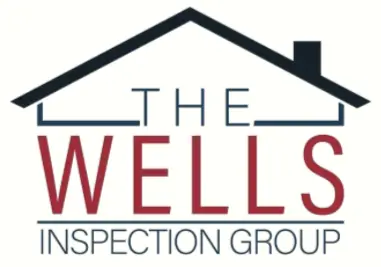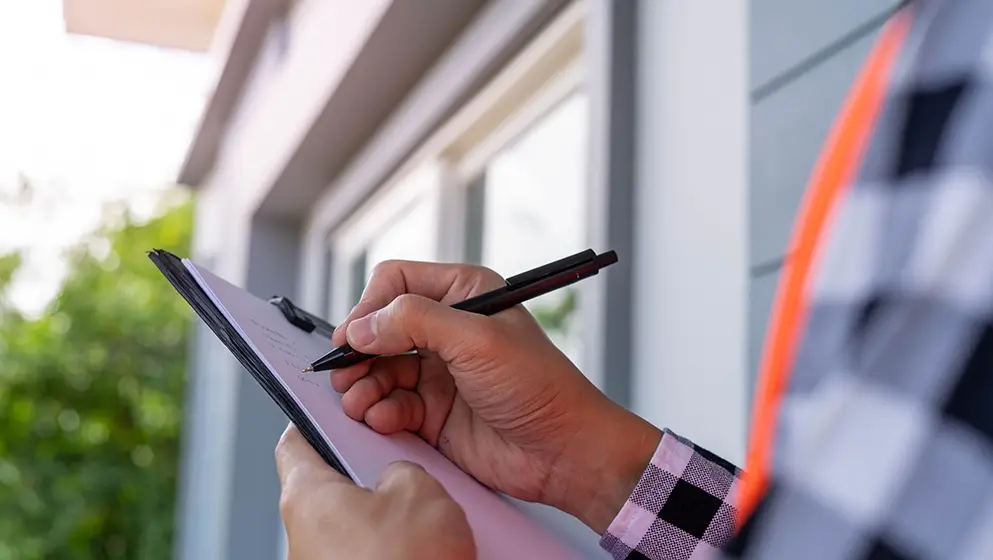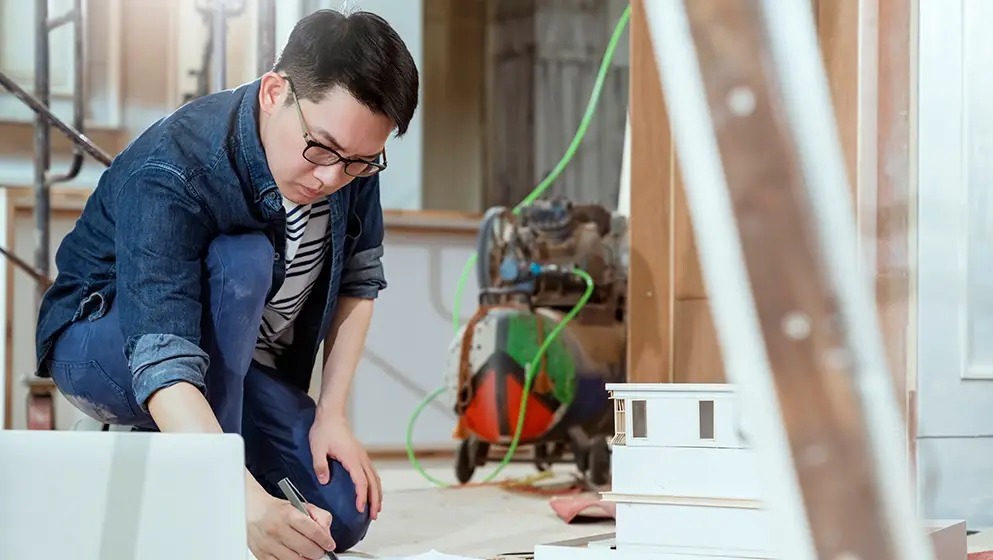Home inspection reports are vital documents that provide a comprehensive analysis of a property’s condition. This article aims to guide readers in understanding and interpreting these reports effectively.
The report’s structure is a crucial aspect to comprehend, as it typically follows a standardized format. By familiarizing oneself with this structure, readers can navigate through the report with ease and extract valuable information in an organized manner.
Additionally, the evaluation of the property’s exterior and interior is explored to provide readers with a thorough understanding of the inspection process. This includes an analysis of the property’s structural integrity, electrical systems, plumbing, and other crucial components.
Furthermore, the article discusses how to address any identified issues and provides guidance on resolving them. By adhering to an objective and impersonal academic style of writing, this article aims to provide readers with a detailed and informative guide to better understanding their home inspection reports.
Introduction to Home Inspection Reports
Home inspection reports serve as a detailed documentation of the condition of a property, providing a comprehensive assessment of its various components and systems. These reports offer an overview of the property’s condition, highlighting any existing issues or potential problems. They are typically conducted by professional home inspectors who are trained to identify defects, safety hazards, and other concerns that may affect the value or habitability of a property.
Understanding home inspection reports is crucial for both buyers and sellers. For buyers, these reports provide valuable information about the property they are considering purchasing. They can help buyers make informed decisions about whether to proceed with the purchase, negotiate repairs or price adjustments, or even withdraw from the transaction altogether. On the other hand, sellers can benefit from home inspection reports by being aware of any potential issues that may arise during the sale process. This knowledge allows sellers to address these issues proactively or adjust the listing price accordingly.
In the subsequent section about understanding the structure of the report, we will delve into the specific elements and sections commonly found in a home inspection report. This will provide a step-by-step guide on how to interpret and navigate through the report effectively.
Understanding the Structure of the Report
The structure of the home inspection report is designed to provide a clear and organized overview of the property’s condition, allowing potential buyers to make informed decisions. The report typically consists of several sections that cover different aspects of the property.
The first section of the report usually includes general information about the property, such as the address, date of inspection, and the names of the inspector and client. This is followed by a summary of the major findings and recommendations.
The report then delves into the specific areas of the property that were analyzed during the inspection. One important aspect that is assessed is the foundation of the property. This includes looking for signs of cracks, settling, or any other structural issues that could affect the stability of the building.
The roof is another crucial area that is thoroughly examined. The inspector checks for any signs of damage, leaks, or worn-out materials that may require repairs or replacement.
To engage the audience, the report often includes a bullet list of key findings and recommendations related to the foundation and roof. These bullet points highlight the most important aspects that potential buyers should pay attention to.
In the next section, we will discuss the process of evaluating the exterior of the property, which involves examining the siding, windows, doors, and other external features.
Evaluating the Exterior of the Property
Evaluating the exterior of the property involves a thorough examination of the siding, windows, doors, and other external features. One important aspect to consider is the condition of the roof. The inspector will assess the roof for any signs of damage, such as missing or broken shingles, leaks, or signs of wear and tear. They will also inspect the gutters and downspouts to ensure they are properly functioning and directing water away from the property.
In addition to the roof, the landscaping features of the property are also evaluated. This includes an assessment of the grading and drainage around the property to ensure water is properly directed away from the foundation. The inspector will also inspect the condition of any retaining walls, walkways, and driveways, looking for any signs of damage or deterioration.
Understanding the exterior of the property is crucial because it can affect the overall condition and value of the home. A well-maintained exterior can protect against water damage and other structural issues. By evaluating the siding, windows, doors, roof condition, and landscaping features, the inspector can provide valuable insights into the overall quality of the property.
Analyzing the Interior of the Property
Assessing the interior of the property involves a thorough examination of the structural integrity, functionality, and overall condition of the various rooms and components within the house. This step of the home inspection report is essential in identifying any potential issues that may exist within the property.
Here are some key areas that are typically evaluated during the interior inspection:
- – Ventilation: The inspector will assess the ventilation system in the house, ensuring that it is functioning properly and effectively. They will check for proper airflow and ventilation in areas such as bathrooms, kitchens, and basements, as well as inspect the condition of exhaust fans and ductwork.
- – Plumbing: The plumbing system will be inspected to identify any leaks, blockages, or other issues. The inspector will check the water pressure, evaluate the condition of pipes and fixtures, and test the functionality of faucets, toilets, and drains.
- – Electrical systems: The electrical system will be examined to ensure it meets safety standards. This includes checking the condition of wiring, outlets, and switches, as well as inspecting the electrical panel for any potential hazards.
- – Overall condition of interior spaces: The inspector will assess the condition of walls, ceilings, and floors, checking for any signs of water damage, cracks, or other structural issues.
By thoroughly assessing ventilation and inspecting plumbing, the interior inspection provides valuable insights into the overall condition of the property. This information is crucial for addressing and resolving any identified issues.
Addressing and Resolving Issues
Addressing and resolving issues discovered during the interior inspection is crucial for ensuring the safety and functionality of the property. Identifying and taking corrective actions promptly can prevent minor problems from escalating into major concerns. Once issues are identified, homeowners should consult professionals or contractors with expertise in the specific areas requiring attention.
Resolving issues may involve repairing or replacing damaged components, such as broken windows, faulty electrical outlets, or leaking pipes. It is essential to address these issues promptly to prevent further damage or potential hazards. Homeowners should prioritize resolving issues related to safety, such as repairing loose handrails or addressing structural integrity concerns.
In addition to safety concerns, addressing maintenance issues is vital to maintain the property’s functionality and value. This may include repainting walls, fixing squeaky floors, or replacing worn-out fixtures. By addressing these issues, homeowners can ensure the property remains in good condition and potentially increase its market value.
It is important to note that some issues may require specialized expertise. In such cases, homeowners should seek professional assistance, such as contacting licensed plumbers, electricians, or HVAC technicians. These professionals can accurately diagnose and resolve complex issues, ensuring the property’s safety and functionality.
In conclusion, addressing and resolving issues identified during the interior inspection is crucial for maintaining the safety, functionality, and value of the property. Taking corrective actions promptly and consulting professionals when necessary can prevent minor issues from escalating and ensure the property remains in optimal condition.
Conclusion
In conclusion, understanding your home inspection report is crucial for homeowners and potential buyers alike. By comprehending the structure of the report and evaluating both the exterior and interior of the property, one can gain valuable insights into the overall condition and potential issues of the home.
Addressing and resolving any identified issues is essential to maintaining the property’s value and ensuring a safe living environment. By following this comprehensive guide, individuals can make informed decisions and take necessary actions to protect their investment.





